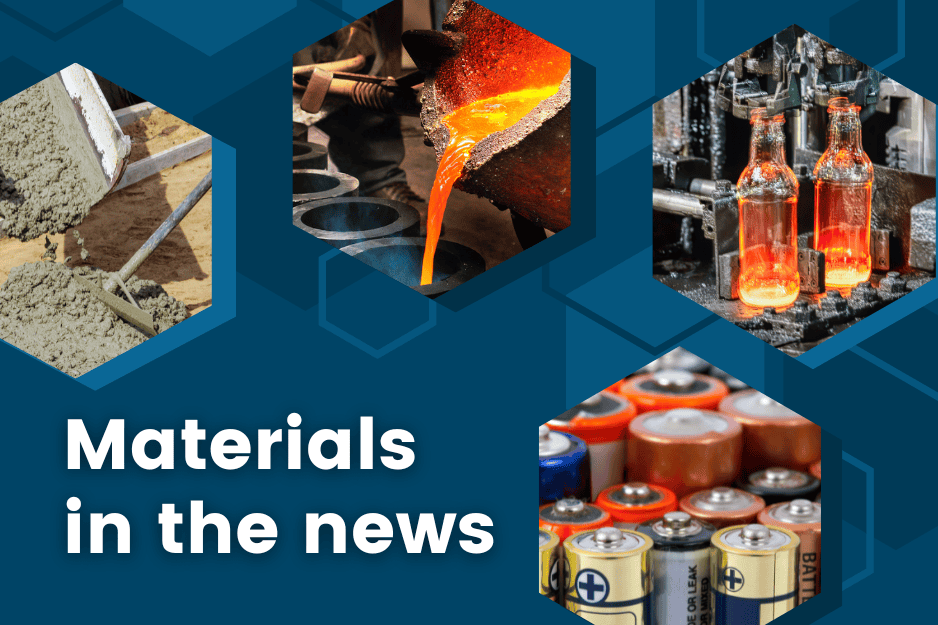
[Image above] Credit: ACerS
NANOMATERIALS
3D-printed graphene composites for efficient ice control
Researchers at the Hefei Institutes of Physical Science of the Chinese Academy of Sciences developed a novel 3D-printed graphene/polymer double-layer composite featuring high anisotropic thermal conductivity. This composite could serve as a high-performance material for anti-/de-icing systems.
Nanotech blankets offer new path to clean drinking water
Researchers at The Ohio State University developed a new material that, by harnessing the power of sunlight, can clear water of dangerous pollutants. The material consists of self-supported, nanofibrous titanium dioxide structures prepared using blend electrospinning.
ENERGY
CPMAC boosts perovskite solar cell efficiency and lifespan
Researchers showed that the incorporation of a synthetic molecule called CPMAC into perovskite solar cells enhances the cells’ energy efficiency and longevity. CPMAC is an abbreviation for an ionic salt synthesized from buckminsterfullerene, a black solid made of C₆₀ carbon atoms.
Testing floating photovoltaics at different heights
Curtin University Malaysia researchers tested the performance of floating photovoltaic panels at a height of 800 mm and 250 mm above their floating structures. They found that a cooling effect made the high-height panels the most effective system.
Europe’s hydrogen bus trials show mixed results
Hydrogen buses have undergone trial runs throughout Europe, but they are proving to be prohibitively expensive to operate.
ENVIRONMENT
Dramatic boost in air quality from electrifying railways
Researchers from the University of California, Berkeley found that Switching from diesel to electric trains dramatically improved the air quality aboard the San Francisco Bay Area’s Caltrain commuter rail line, reducing riders’ exposure to the carcinogen black carbon by an average of 89%.
Holiday flights could carry fewer passengers as world warms
University of Reading researchers studied how hotter air affects aircraft performance during take-off at 30 sites across Europe. They determined that by the 2060s, some airports with shorter runways may need to reduce their maximum take-off weight by the equivalent of approximately 10 passengers per flight during summer months.
MANUFACTURING
Origami-inspired ceramics bend without breaking
University of Houston researchers developed a new class of ceramic structures that can bend under pressure without breaking. They 3D printed the ceramic structure, which is based on the Miura-ori origami pattern, and then coated it with a stretchable, biocompatible polymer.
Comprehensive guide on multiphoton 3D lithography
Scientists from the Laser Research Center at Vilnius University helped prepare a comprehensive guide on multiphoton 3D lithography. The guide clearly explains how this advanced technology works and how it can be applied in practice—from setting up a laboratory to optimizing the use of existing equipment.
OTHER STORIES
Webinar: Step-by-step guide to writing a literature review
Wiley is hosting a webinar that will discuss the steps involved in writing a literature review. The webinar takes place April 24, 2025, at 10 a.m. Eastern.
Never-before-seen quantum states
Columbia University researchers observed more than a dozen never-before-seen quantum states in twisted-layer molybdenum ditelluride.
Crystal clues on Mars point to watery and possibly life-supporting past
Researchers led by Queensland University of Technology analyzed data from NASA’s Perseverance rover and uncovered compelling evidence of multiple mineral-forming events just beneath the Martian surface.
Students develop novel plan for low-cost hypersonic research
University of Virginia students plan to hitch a ride on a NASA rocket in August 2025. They want to see if they can be the first researchers to use low-cost, miniature spacecraft technology to acquire reentry data that could improve future full-scale hypersonic aircraft designs.
Author
Lisa McDonald
CTT Categories
- Weekly Column: “Other materials”
Related Posts
Other materials stories that may be of interest for December 10, 2025
December 10, 2025
Other materials stories that may be of interest for December 3, 2025
December 3, 2025
Other materials stories that may be of interest for November 26, 2025
November 26, 2025